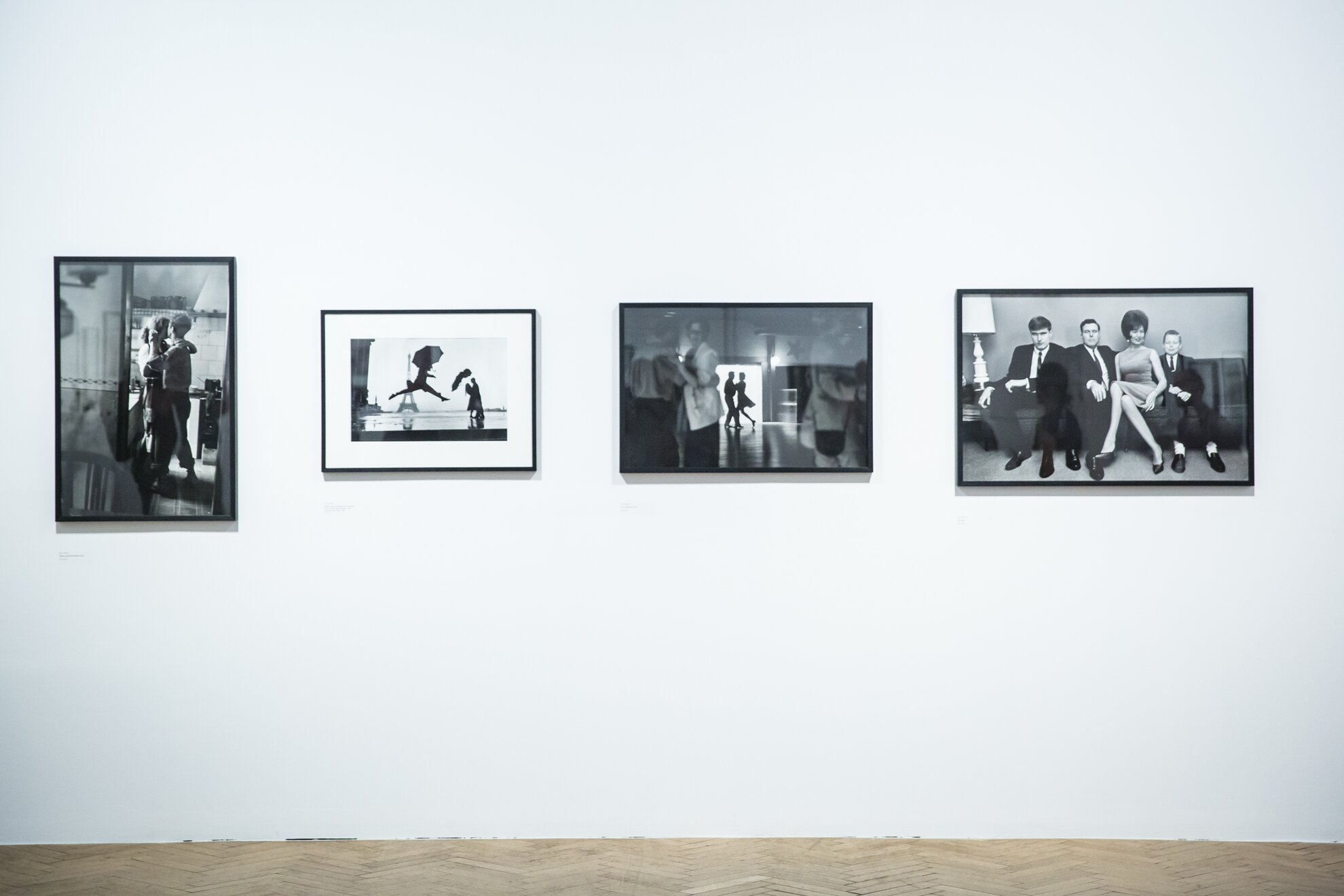Every year, the Capa Center prepares for the summer season with a large-scale exhibition that attracts both city visitors and local citizens wandering around the scorching-hot concrete jungle. Last year, this exhibition was “Total Records” – featuring more than 400 iconic album covers – preceded by “Capa in Color”, which presented the color pictures of world-renowned Magyar photographer Robert Capa.

Elliott Erwitt, who turns 89 years old this year, began his photographic career in 1953 by joining Magnum Photos, an international photographic cooperative, upon Capa’s invitation. He worked for the magazines Life, Holiday, and Look, and was also the chairman of Magnum for three years. He was born in Paris to Russian immigrants; he spent part of his childhood in Milan, then moved to the Unites States with his family – as a result, he spoke well in English, Russian, French, and Italian, which greatly benefited him abroad and in his work.

Besides his fashion photography and commissions, he always found the time to build his own oeuvre. “I'm an amateur photographer, apart from being a professional one, and I think maybe my amateur pictures are the better ones,” he said. Indeed, the photos he took for pleasure became his most famous works, including the one depicting a man jumping with an umbrella beside a kissing couple in front of the Eiffel Tower.

His traveling exhibition at the Capa Center displays 130 photos taken by Erwitt in 24 countries, sorted into nine thematic sections. Most of the photographs were taken between the ’50s and the ’70s. Whether it’s pictures of the beach, snapshots of museum visitors, or urban genre pictures from Paris, New Orleans, Tokyo, or Argentina, his works make it clear why Erwitt is often called the Woody Allen of photography. “You can find pictures anywhere. It's simply a matter of noticing things and organizing them,” he said, and accordingly, photographed everyday situations, waiting for a special moment to be born before he took the shot.


Distinctive irony and humor define his unexpected associations; on his photos, a gigantic Pepsi ad provides a surreal juxtaposition with the crucified Jesus, a diver pops up from London’s Thames, and a horseshoe somehow ends up between naked legs on the Brazilian beach. He’s always been interested in the subject of men-women relationships, but we find his dog-themed photos to be the most entertaining. Erwitt is a big fan of canines, and thinks that one can learn the most about human nature through dogs and children – therefore, his pictures of them have their own section at the exhibition.



He also photographed famous people, including J.F.K., Che Guevara, Fidel Castro, Andy Warhol, Marilyn Monroe, Alfred
Hitchcock, and even the mother of Robert Capa, embracing her son’s grave. Since Erwitt is still an active photographer, he even shot pictures of former U.S. President Barack Obama during his inauguration ceremony.
Budapest and the Hungarian countryside in Erwitt’s oeuvre
In 1964, then 36-year-old Erwitt was working on a report for Life magazine on the “exotic” countries beyond the Iron Curtain, including the Czech Republic, Poland, and Hungary. While Erwitt’s retrospective is a traveling exhibition by Magnum Photos that is displayed in this form everywhere, curators Flóra Barkóczi and Gabriella Csizek created an independent, Hungary-themed exhibition from the 30 photos he took when visiting the country – these will be presented in Mai Manó House, also known as the Hungarian House of Photography. For the first time, the Hungarian audience can get familiar with Erwitt’s perspective of Budapest and the Hungarian countryside. While the location of a few pictures can be identified, like the Keleti Railway Station or the Citadel, art historians are currently studying where exactly the photographs were taken, as the succinct titles don’t tell much. Erwitt paid his respects in the countryside, as well: his photographs depict elderly women praying in traditional headscarves, farmers rocking handlebar mustaches and black hats, and young maidens in traditional costumes leading a flock of geese – the latter picture became so important that it’s exhibited in the retrospective, as well.



At Mai Manó Ház, Erwitt’s photographs taken in the Czech Republic and Poland will be shown as well, so we can compare the differences and similarities in how Erwitt interpreted the Soviet Bloc. On the first floor of the museum, visitors can also view a screening of photos from Fortepan, taken of Hungary in 1964, as well as pictures from other photographer members of Magnum Photos.





